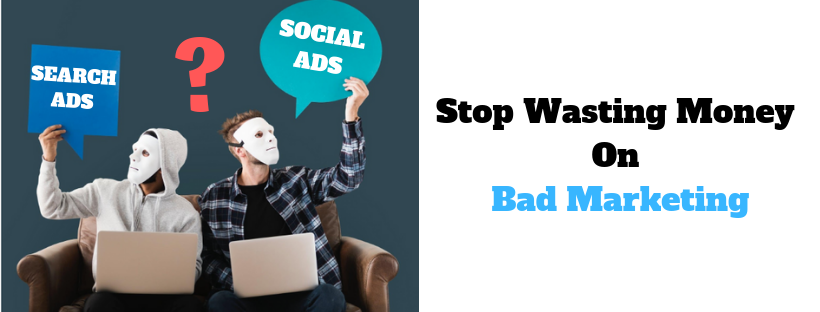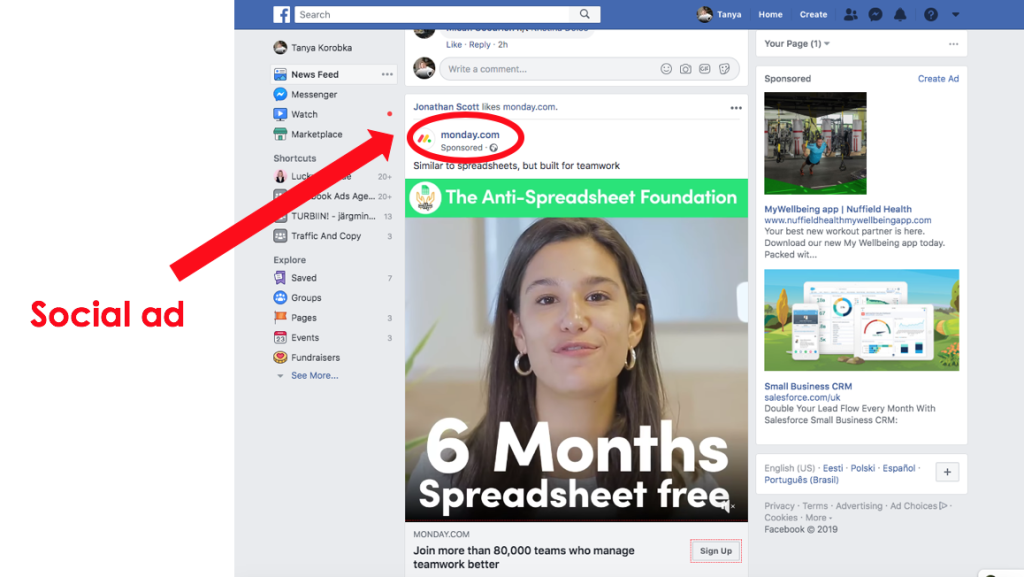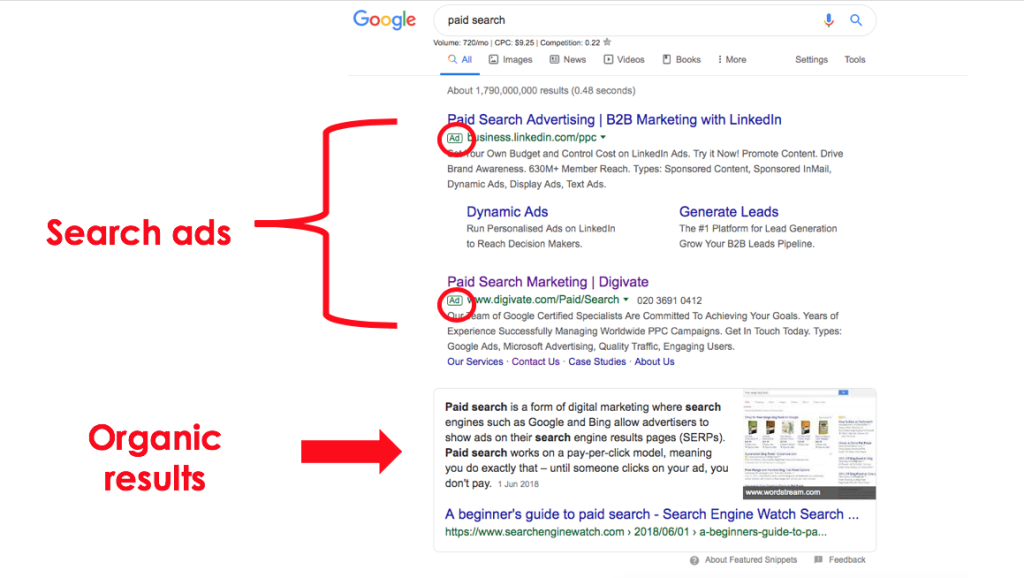
In this article, we will show you how to manage an integrated PPC campaign on search and social media to increase your conversions.
If you’re like most marketers, you are probably overwhelmed by abundant choices, so you just stick with what you know.
Decision fatigue is why so many experts in online marketing specialise in 1 or 2 marketing approaches.
If you want to get more of your advertising spend and increase your revenue, then this article is for you …

We’ve been running integrated paid campaigns across search, display, video, social over 10 years and our experience at Digivate shows when we run integrated advertising campaigns across different platforms, our performance improves.
Below we are going to show you how can an integrated PPC campaign reduce the cost per acquisition while converting significantly more customers than standalone PPC campaign.
The Benefit of Integrating Paid Search and Paid Social
When integrated campaigns are expertly managed, you’ll spend less money while converting more loyal customers.
The biggest benefit of an integrated PPC campaign is not just increased cross-platform visibility, but also the customer data, that can be combined strategically to improve your campaigns further.
Integrated PPC Campaign Allows for Better Targeting
The biggest benefit of the cross-channel campaign is that it allows you to learn more about your target audience, which will improve your targeting and ultimately – lower your customer acquisition costs.
If you are only using one channel to target your audience, you risk losing out on valuable insights which allow you to refine your targeting.
Below are 2 examples of how exactly the cross-channel campaign helps to refine our PPC strategies …
Use Audience Observations to Inform Your Social Targeting.
Google’s “Observation” feature allows you to monitor how ads are performing for your selected placements, topics, or audiences while your campaign is running.
Note that setting up “Observations” don’t affect your reach. You simply “observe” data to understand your audience better.
For example, a financial services client could set up Audience Observations for the following in-market audiences: home purchase loans, mortgage, home equity loans, personal loans, mortgage refinancing, financial services, etc.
Over time you’ll see that some groups perform better than others and you can use that information in your social media targeting and ad copy to reach even more people.
Use Comments on Social Ads to Tweak Your Messaging
Social media advertising allows your audience to engage with your ads. This is great because you’ll learn what people actually think about your brand, offering and messaging.
As a result, you may discover new keywords and phrases to target on search and social ads and tweak your messaging so it’s more aligned with people’s needs.
How to Manage an Integrated PPC Campaign From Start to Finish
Below is our step-by-step guide on how we manage integrated ad campaigns at Digivate.
STEP 1: Start With a Search Campaign to Gather Data
This is a testing and data-gathering phase and should not be overlooked.
Search PPC ads are an excellent way to learn about the users. You learn what your audience actually types into Google to find information related to your business.
You will understand their interests, clicking habits, social background, location, travelling habits, shopping habits, demographics, parental status, income, device specs, etc.
During this stage, we test different ad formats and platforms, so we are always ahead of the curve.
Search ads allow you to refine your target audience, so you can make more informed choices when setting up social ads.
HOW CAN WE HELP? We make sure we get optimal results as cost-effectively as possible in the shortest period so that you can refine your audiences and convert better.
STEP 2: Expand Your Best-Converting Audiences
Once you run your search ads to gather data about your target audience and you know which audiences convert the best, you’ll need to broaden your reach either on search or social media.
This is where Facebook Lookalike Audiences come into play. Facebook Lookalike Audiences feature allows you to expand beyond your reach, but still target people with highly specific profiles.
Lookalike Audiences are essentially strangers to your brand and know nothing about your products, but some of them are likely to become your customers, because of the similar behaviours and characteristics they have to your existing audiences.
STEP 3: Set Up Micro-Conversions With the Right Tracking
A micro-conversion is a smaller conversion that leads you to the ultimate goal (so-called macro conversion).
For example, if your ultimate conversion is completed booking or form submission, then your micro-conversion can be a newsletter sign up, downloading a PDF document or spending at least 2 min on the website.
Micro-conversions can be used as a sales funnel, where those who micro-converted are retargeted to take them further down in the funnel to the ultimate conversion.
HOW CAN WE HELP? We help you to understand your funnel, set up correct tracking and analytics and run cross-platform campaigns that convert quicker.
Help me with integrated campaigns
STEP 4: Run Hyper-Targeted Conversion Campaigns
This is the stage where you run your integrated marketing campaigns with the sole purpose to convert.
By this stage, you know exactly which type of people convert best. You are hyper-focused and your audiences are smaller.
Difference Between Paid Search and Paid Social Ads
Paid search and paid social are two very different advertising techniques.
Paid search ads are those ads that appear at the top of search listings when you are actively searching for a product, service, or information.
The great thing about search advertising is that you will only be exposed to ‘warm’ leads who are ready to buy because you target keywords that match your user’s search query.
For this reason, search ads tend to bring higher quality leads that are more likely to convert.
Unlike paid search, paid social ads appear on people’s newsfeeds and timelines.

On social you target people by interests, demographics, interests, online behaviours, major life events like engagement, baby shower, funeral, marriage and many more.
For example, Facebook has 1000s ad targeting combinations. All these targeting options allow you to broaden your search audience using a smart algorithm.
Equally, you can use audiences engagement data you’ve gathered through running your social campaigns to tweak and optimise your search ads.
Search and social ads work brilliantly together.
TOP TIP! Search ads work better for bottom-funnel ready-to-buy leads, whereas social media ads better at top and mid funnel targeting. Search ads work best for necessity-based products and services like washing machine, home extension, software, etc, whereas social ads are more aimed at impulse buyers – i.e “the fancy dress I never thought I needed”.
Help me with integrated ad campaigns
Facebook Is a Market Research Goldmine You Didn’t Know Existed
Facebook has pretty much every conceivable life event targeting option since people tend to post these to their timelines.
Another great targeting parameter is Custom Audiences, which enables to connect with your existing contacts, like email subscribers, customers, people who Like your Facebook page or visited your site.
You can also target people, who have visited a specific section on your website. This is excellent if you have a large number of web pages and products.
Getting in front of people, who are already familiar with your brand, allows you to increase their lifetime customer value, order frequency and loyalty.
The Facebook algorithm knows a whole lot about your medical problems, income, reading habits, living arrangements, marital and parental status, interests and even your exact postcode.
Facebook Custom Audience vs Lookalike Audience
Facebook Customer Audience is also great for when you want to exclude your existing contacts from your advertising campaigns.
Excluding your existing customers helps you to avoid wasted clicks or views. For example, if you’re offering a free trial to new users, there’s no reason to show it to your loyal customers.
Another ad parameter and a logical extension for Facebook Custom Audiences is Lookalike Audiences.
Once you have a good Custom Audiences strategy in place (i.e groups that convert easily and provide ROI for your marketing spend), you can create audiences that look like your Customer Audiences.
Lookalike Audiences allow you to expand beyond your reach, but still target people with highly specific profiles.
Facebook has made the manual process of figuring out what commonalities binds your target market with the potential market by automating it, sparing you a whole bunch of time and effort.
But most marketers find themselves at a loss when faced with so many options.
The majority of marketers still don’t understand the massive potential Facebook has in reaching and converting the right audience.
HOW CAN WE HELP? Facebook advertising requires specialist technical and analytical capabilities. If you don’t know what you’re doing, you can easily waste a lot of money. Let us help you make the most of your cross-channel advertising budget on Facebook and beyond.
Final Takeaway
Optimising your ad campaigns cross-platform is a constant learning curve.
All advertising platforms want you to spend as much money as possible with them – they don’t want you to run cross-platform campaigns, because they lose money to their competitors.
So you need to be proactive and find ways to reach your audience most cost-effectively.
Integrated cross-platform campaigns allow you to reduce your cost per acquisition and as such increase your revenue.
***
Read more about how we integrate search, social and content
Read more about the top 10 most creative PPC campaigns of all time!




